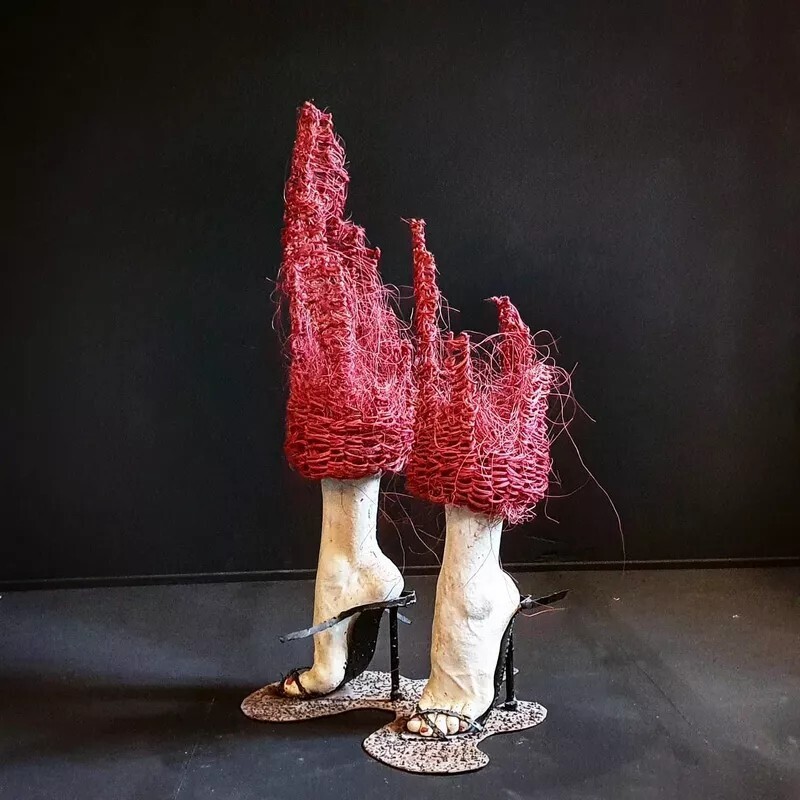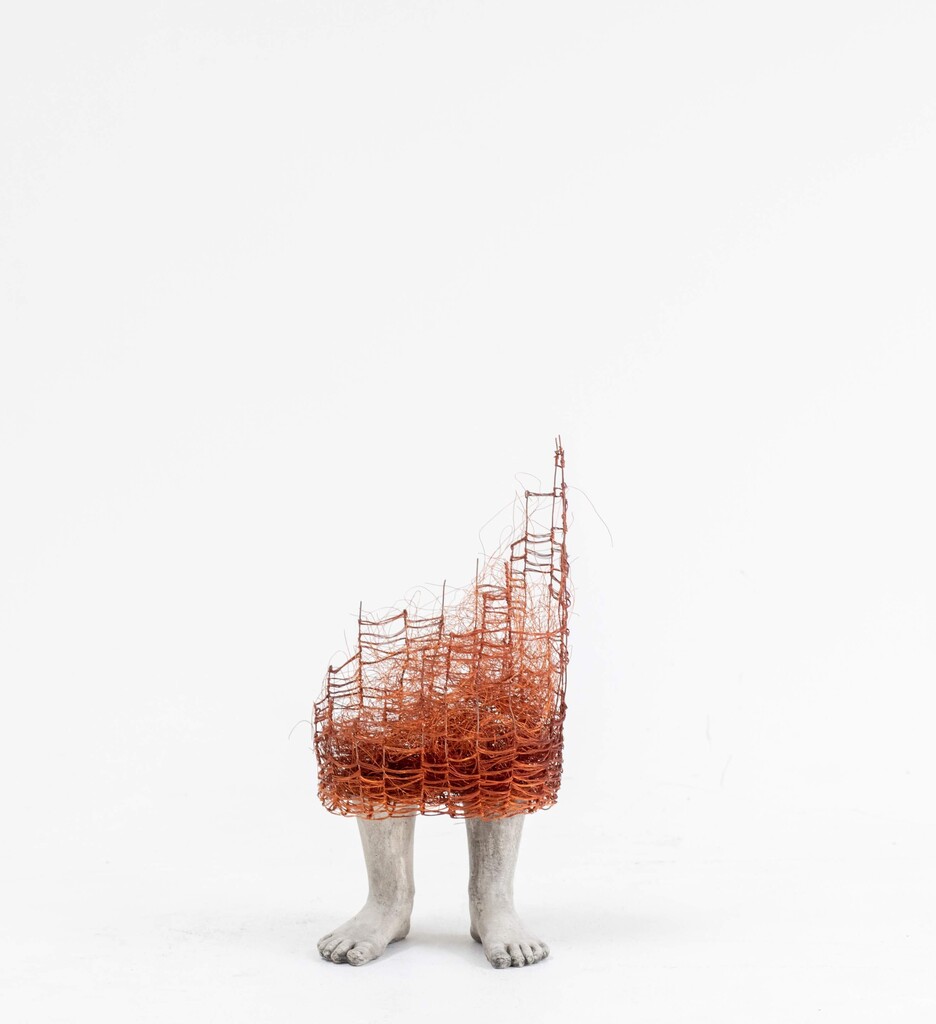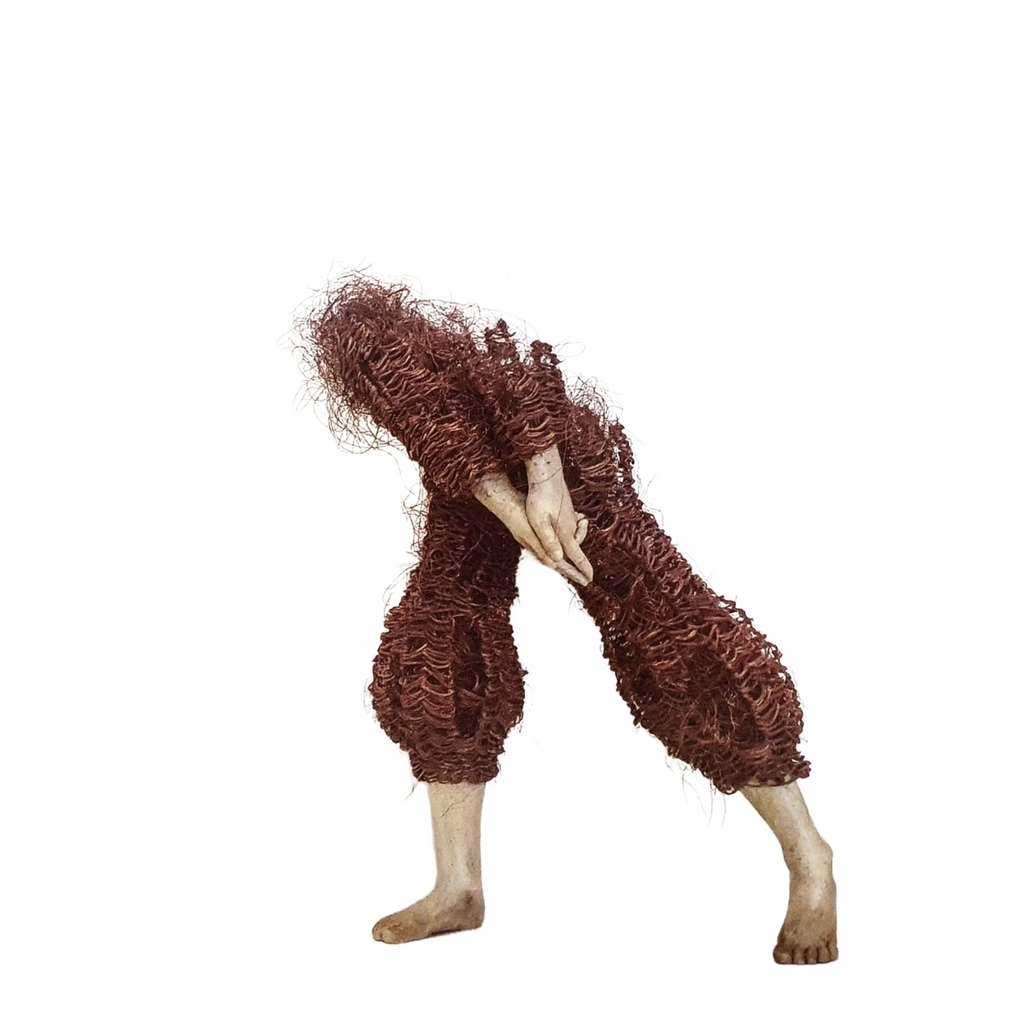JULY , 2020
Milla Wallenius

Norwegian artist Lene Kilde (b. 1981) is an artist who works in fragments. She is a sculptor whose figurative work centers around the human and the body. Her art consists of both largescale public sculptures and life-sized pieces.
In her work Kilde focuses on exploring the communicative aspects of the human body. She is interested in body language, particularly that of children, and uses her art to highlight how the body is used to communicate emotions and needs. She explains:
“I have worked a lot with children and their body language, and in my experience their body language is the purest form of communication.”
This highly visual form of communication can be conscious or unconscious and it is often expressed in the positioning of arms and legs.
Kilde is trained in product design and uses materials such as concrete, copper-wire, metal, wood and silicone to create her sculptures and staged situations.
Her works are almost always pre-thought and sketched on paper, although creative inputs are welcome during the production process. The materials are chosen in accordance with what she is going to produce and appear, despite their industrial origin, surprisingly weightless, lively and flowy.
Kilde enjoys playing with different substances and challenges the viewer by producing illusionary compositions that play with vision, balance and gravity.
Things are not always as or what they seem to be and as spectators, we are forced to ponder, for example how it is possible for concrete to float in the air.
A remarkable lightness and elegance are also present in her early wire sculptures. In these works, Kilde has used the wire to craft lines and form shapes in order to produce sculptures that resemble drawings.
By placing these solid three-dimensional ‘sketches’ in physical space, Kilde creates ‘illustrations’ into which one can step and thus challenges ideas of the difference between sculpture and drawing.
Kilde finds her inspiration in people, real life events, ordinary situations and conversations, and allows these everyday encounters and impulses to trigger her imagination and creativity. She is also stimulated by her family and friends, whom she uses as models.

A year after being awarded the Norwegian Arts Council three-year work scholarship for young artist in 2013, Kilde started working on a piece for the Molinere Under Water Sculpture Park in the Caribbean Sea. The 800 square meter under water sculpture area outside the coast of Grenada is accessible by boat, for scuba divers and snorkelers. It functions as an artificial reef that provides a hiding place for marine life and surfaces for corals and sponges to attach and grow.
The park was created as an attempt to stimulate the natural development in the now protected area affected by both global warming and pollution. It consists of more than 70 sculptures, two of which are made by Kilde, in depths of 5–8 meters. Kilde was encouraged to join the public art project during her time as an artist in residence in Grenada. One of the pieces she created is The Nutmeg Princess, which is inspired by a local tale of a Caribbean princess, who once lived in a bottomless lake.
The large-scale female sculpture cast in concrete is located on the sandy ocean floor and exposed to the natural forces in the area. This will with time change the sculpture and despite the tough and solid material of which it is constructed, it will eventually be shaped by natural processes in the area.
Kilde’s hard and cold industrial materials of choice are often in contrast with the soft human bodies portrayed, and the cheerful innocence associated with the regularly depicted children.
The sculptures are however not only about the skillful use of materials and their presence, but also about that which is not there. As the artist has herself explained, her works are made as much of concrete and wire as they are of air. In other words, the raw materials are as important as the empty spaces.
Kilde’s bodies are never whole, at least not in the physical sense. Headless with levitating limbs and other traces of human figures they are like small ghosts, reflections of another reality or echoes from the past. The only partly manifested childlike bodies appear lost, broken, haunting and melancholic – at first.
Kilde is a brilliant creator of dynamic relationships between the non-object and the object, the empty space and the sculpture, the air and the fragment. Her sculptures are well-balanced composition that allow for another crucial ingredient to step in – the imagination.
Kilde’s own upbringing close to the Norwegian nature where she could play and let the wilderness stimulate her mind is very much reflected in her work.
Rather than providing the viewer with a full body, Kilde invites us to fill in what is missing. What that is varies from person to person depending on previous experiences. The encounter with Kilde’s work is therefore very personal. She explains as follows:
“The fact that the sculptures are missing body parts, a head and a face make people associate them with their own childhood and family.”

Dressed in colorful outfits Kilde’s ‘children’ are vibrant, playful and adventurous. Her sculptures are highly narrative and stand in front of us like pieces, fragments, of a fairytale. An unfinished story that we are asked to complete.
Now fragments can be just that, pieces of a story. They can also be traces of previous events, historical remains or recollections of something that happened a long time ago.
Kilde’s sculptures encourage us to remember, whether it is our own childhood, memories of our own children or family members. It is not uncommon that we as adults forget what it is like to be a child. The curious open mindedness, the pure amazement over everyday things, the unapologetic straight forwardness and the ways in which also we once saw the world.
Suggestive, intuitive and vastly relatable Kilde’s sculptures offer a way for us to look back and explore our surroundings from a different perspective. In many ways they encourage us to leave behind the busy everyday life of responsibilities and once again feel what it was like to see the world through the eyes of a child. A chance to remember ourselves or someone we know.
Rather than eerie manifestations of incomplete human figures, Kilde’s works are incredibly warm and fun, one might say even emotional, and they give us an opportunity to think a bit less, experience a bit more and above all imagine.
Her pieces might be incomplete in the sense that her sculptures lack body parts, but that does not mean they remain unfinished. They just need us. Her works simply provide us with fragments that allow us to create, finish and complete a meaningful whole.
This article about Lene Kilde takes part of magazine, ARTICULATE #24. Read, download or order your print version of the full publication below
Si vous souhaitez en savoir plus sur les prix et les informations relatives aux œuvres disponibles de Lene Kilde, veuillez remplir le formulaire ci-dessous.
Nous vous répondrons dès que possible.
NEWSLETTER
Abonnez-vous à notre newsletter et restez informé·e de l’actualité du Villa Domus : les artistes, les expositions, les artfairs…
Honfleur
45 Rue du Dauphin
14600 Honfleur
France
Honfleur
7 Rue des Capucins
14600 Honfleur
France
NEWSLETTER
Abonnez-vous à notre newsletter et restez informé·e de l’actualité du Villa Domus : les artistes, les expositions, les artfairs…
© 2023 VILLA DOMUS | LEGAL INFORMATION